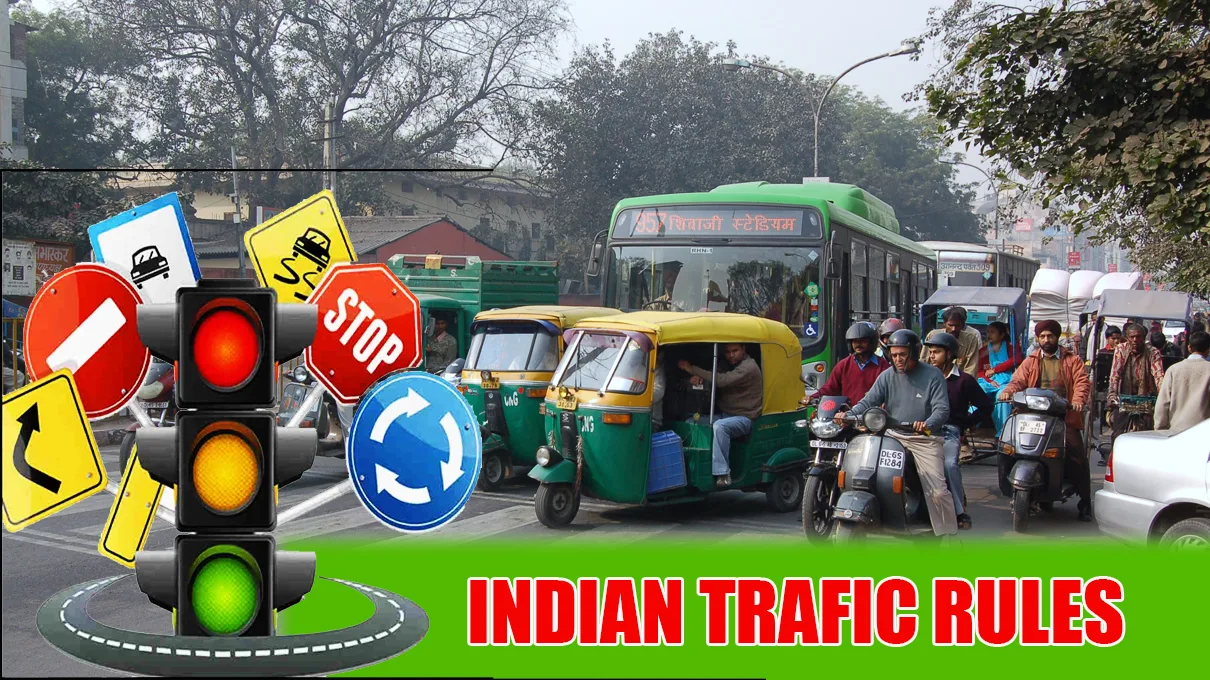Introduction
India has one of the highest numbers of road accidents in the world, and traffic rules and regulations are crucial in reducing the number of accidents and fatalities and ensuring the safety of all road users. We will discuss the popular Indian traffic rules and regulations in detail, covering everything from speed limits to parking regulations.
10 Traffic Rules in India every driver should know
Speed Limits
Speed limits are one of the most basic traffic rules in India. These limits are put in place to ensure the safety of drivers, pedestrians, and other road users. The speed limit for different vehicles in India is as follows:
- Cars and other four-wheeled vehicles – 50 km/h in the city and 100 km/h on highways.
- Two-wheelers – 40 km/h in the city and 80 km/h.
- Commercial vehicles – 40 km/h in the city and 80 km/h.
It’s vital to remember that these speed limits are maximums, not minimums. Drivers are required to adjust their speed based on the road and weather conditions.
Seat Belts
Seat belts are mandatory for all passengers in a car. Drivers fail to ensure that their passengers are wearing seat belts. Children under 12 must also use a suitable car seat or booster seat, buckle up with the seat belt, and sit in the back seat.
Helmets
Helmets are mandatory for all two-wheeler riders in India. This rule applies to both the rider and the pillion passenger. Riders who fail to wear a helmet can face a penalty. The helmet must be ISI certified and fastened securely.
Traffic Signals
Traffic signals are an essential aspect of ensuring the safety of road users. Drivers stop at red lights and wait for the green light before proceeding. Failure to comply with traffic signals can result in a penalty.
Overtaking
Overtaking is a common cause of accidents in India. Drivers overtake only from the right side of the vehicle they intend to pass. It is also mandatory to use turn signals while overtaking or changing lanes. Drivers who fail to comply with these rules can face a penalty.
Driving Under the Influence
Driving under the influence of alcohol or drugs is an offense in India. The legal limit for blood alcohol concentration (BAC) is 0.03%. Drivers who drive under the influence can face fines, license suspension, or even imprisonment.
Parking Regulations
Parking regulations vary across India. However, some basic rules apply in most cities:
- Parking in no-parking zones, such as bus stops, fire hydrants, and corners.
- Drivers are required to park in the direction of traffic flow.
- Parallel parking is mandatory in some areas.
- Double parking is not allowed.
Drivers who fail to comply with parking regulations can face penalties or even have their vehicles towed away.
Use of Mobile Phones
The use of mobile phones while driving is prohibited in India. Drivers who are using their phones can face a penalty. The only exception is if the phone is used as a GPS device and is mounted securely on the dashboard.
Horns
Horns are an essential aspect of driving in India. However, there are rules governing their use:
- Horns should alert other drivers in case of danger.
- Horns should not be unnecessarily or excessively.
- Drivers are required to use horns in no-horn zones.
Documents
Drivers are required to carry certain documents while driving, including:
- Driving license
- Vehicle registration certificate
- Insurance certificate
- Pollution under control (PUC) certificate
Failure to produce these documents by a law enforcement officer can result in a penalty.
Conclusion
In conclusion, traffic rules and regulations are essential to ensure the safety and security of road users in India. It is the responsibility of every driver to comply with these rules and regulations to reduce the number of accidents and fatalities on the roads. It is important to remember that traffic rules and regulations are in place for a reason, and violating them can have serious consequences. Therefore, road users are aware of rules and regulations and follow them diligently. Only then can we make our roads safer and reduce the number of accidents and fatalities in India.
FAQs
The left turn is not always spare in India. In some cases, left turns may be prohibited or allowed only at specific times. Drivers must follow traffic signals and signs to determine whether a left turn is permitted and proceed only when it is safe. All drivers need to exercise caution when making left turns to ensure the safety of all road users.
Road signs in India are constantly evolving and may differ between states. However, the Indian government has created a comprehensive list of road signs to promote safe driving and reduce accidents. All road users need to be aware of and follow these signs to ensure the safety of themselves and others on the road.
What guidelines apply to red lights in India?
In India, drivers stop at red lights and wait for the green light before proceeding. Failure to comply with traffic signals can result in a penalty. It is important to obey traffic signals to ensure the safety of all road users.
Which Indian city has the finest traffic laws?
Cities like Delhi, Mumbai, and Bangalore have implemented various initiatives and programs to improve traffic management and reduce accidents. Cities continue to work towards implementing and enforcing effective traffic laws to ensure the safety of all road users.
